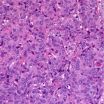(Press-News.org) (NEW YORK, NY, February 26, 2014) – New diagnosis guidelines for autism spectrum disorder (ASD) issued by the American Psychiatric Association (APA) may reduce by almost one third the total number of people being diagnosed, according to new research from Columbia University School of Nursing published in the Journal of Autism and Developmental Disorders. The guidelines, released in May 2013 and the first major update to psychiatric diagnosis criteria in almost two decades, may leave thousands of developmentally delayed children each year without the ASD diagnosis they need to qualify for social services, medical benefits and educational support.
A team led by Kristine M. Kulage, MA, MPH, director of the Office of Scholarship and Research Development at Columbia Nursing, conducted a systematic literature review and meta-analysis to determine the effect of changes to the Diagnostic and Statistical Manual of Mental Disorders (DSM), the APA's classification tool for psychiatric conditions, on diagnosis of individuals with ASD. The study found a statistically significant decrease in ASD diagnosis of 31 percent using the new manual, DSM-5, compared with the number of cases of ASD that would have been identified under the previous version of the manual, DSM-IV-TR.
"This study raises a concern that a medical provider diagnosing a child under the new guidelines won't find the child to be on the autism spectrum, when the same child under the old criteria might have been diagnosed with ASD," says Kulage.
The old manual, DSM-IV-TR, included three distinct subgroups under the broad definition of ASD: autistic disorder (AD), Asperger's disorder, and pervasive development disorder-not otherwise specified (PDD-NOS). The revised manual, DSM-5, eliminates these subgroups, instead establishing a more limited range of criteria for a diagnosis of ASD that is designed to encompass individuals who previously would have fallen into one of the subgroups. The DSM-5 also added a new category called social communication disorder (SCD) to diagnose individuals who have verbal and nonverbal communication impairments but lack other attributes associated with autism. Some individuals diagnosed with PDD-NOS under the old manual would be identified as individuals with SCD under DSM-5, according to the APA.
Under DSM-5, there was a statistically significant decrease in AD diagnosis of 22 percent, compared with the fourth edition of the manual, the meta-analysis found. There was also a statistically significant decrease of 70 percent in diagnosis of PDD-NOS. While diagnosis of Asperger's also declined under DSM-5, the reduction was not statistically significant. In addition, the study found that some individuals who no longer met the criteria for an ASD diagnosis under DSM-5 would also fail to meet the criteria for SCD.
"We are potentially going to lose diagnosis and treatment for some of the most vulnerable kids who have developmental delays," says Kulage. "In many instances, children require a diagnosis of ASD to receive medical benefits, educational support and social services."
Approximately 1 in 88 children in the U.S. have ASD, according to the Centers for Disease Control and Prevention. People with ASD tend to have difficulties with communication, misread nonverbal interactions, and have difficulty making friends. They may also be heavily reliant on routines, extremely sensitive to changes in their environment, and intensely focused on interests not appropriate to the social context they are in. Symptoms fall on a continuum, with variation in severity, and early diagnosis and access to treatment have been proven to result in better outcomes.
INFORMATION:
The paper is titled: "How Will DSM-5 Affect Autism Diagnosis? A Systematic Literature Review and Meta-analysis" and it appeared in the February 2014 issue of the Journal of Autism and Developmental Disorders. Other contributors are: from Columbia Nursing, Arlene Smaldone, PhD, CPNP, associate professor and assistant dean, scholarship and research, and Elizabeth Cohn, PhD, RN, assistant professor and Robert Wood Johnson Foundation Nurse Faculty Scholar. Kulage completed the research while enrolled in a master's degree program at Joseph P. Mailman School of Public Health.
The authors declare no financial or other conflicts of interest.
Columbia University School of Nursing is part of the Columbia University Medical Center, which also includes the College of Physicians & Surgeons, the Mailman School of Public Health, and the College of Dental Medicine. With close to 100 full-time faculty and 600 students, the School of Nursing is dedicated to educating the next generation of nurse leaders in education, research, and clinical care. The School has pioneered advanced practice nursing curricula and continues to define the role of nursing and nursing research through its PhD program which prepares nurse scientists, and its Doctor of Nursing Practice (DNP), the first clinical practice doctorate in the nation. Among the clinical practice areas shaped by the School's research are the reduction of infectious disease and the use of health care informatics to improve health and health care. For more information, please visit: http://www.nursing.columbia.edu.
New autism definition may decrease diagnosis by one-third, Columbia University finds
2014-02-26
ELSE PRESS RELEASES FROM THIS DATE:
Second-most common breast cancer subtype may benefit from personalized treatment approach
2014-02-26
PITTSBURGH, Feb. 26, 2014 – The second-most common type of breast cancer is a very different disease than the most common and appears to be a good candidate for a personalized approach to treatment, according to a multidisciplinary team led by University of Pittsburgh Cancer Institute (UPCI) scientists.
Invasive lobular carcinoma, which is characterized by a unique growth pattern in breast tissue that fails to form a lump, has distinct genetic markers that indicate there may be benefits from drug therapies beyond those typically prescribed for the more common invasive ...
Better nurse staffing and education reduces patient deaths in European hospitals
2014-02-26
The Lancet reported today the results of a study in 9 European countries documenting that hospital nurse staffing and the proportion of nurses with bachelor’s education are associated with significantly fewer deaths after common surgery. A team of researchers led by the University of Pennsylvania School of Nursing in the U.S. and Catholic University of Leuven in Belgium, found that every one patient increase in patient to nurse ratios was associated with a 7% increase in deaths, while having a better educated nurse workforce is associated with fewer deaths. Every 10% ...
Phantom limb pain relieved when amputated arm is put back to work
2014-02-25
VIDEO:
The film shows: 1. The patient in the augmented reality environment, 2. when he is practising specific arm movements with a racing game, 3. when he is executing random motions...
Click here for more information.
Max Ortiz Catalan, researcher at Chalmers University of Technology, has developed a new method for the treatment of phantom limb pain (PLP) after an amputation. The method is based on a unique combination of several technologies, and has been initially tested on ...
Obesity prevalence remains high in US; no significant change in recent years
2014-02-25
The prevalence of obesity remains high in the U.S., with about one-third of adults and 17 percent of children and teens obese in 2011-2012, according to a national survey study in the February 26 issue of JAMA.
Obesity and childhood obesity, in particular, are the focus of many preventive health efforts in the United States, including new regulations implemented by the U.S. Department of Agriculture for food packages; funding by the Centers for Disease Control and Prevention of state- and community-level interventions; and numerous reports and recommendations issued ...
MMR vaccine linked to lower rate of infection-related hospital admissions
2014-02-25
In a nationwide group of Danish children, receipt of the live measles, mumps, and rubella (MMR) vaccine on schedule after vaccination for other common infections was associated with a lower rate of hospital admissions for any infections, but particularly for lower respiratory tract infections, according to a study in the February 26 issue of JAMA.
Childhood vaccines are recommended worldwide, based on their protective effect against the targeted diseases. However, studies from low-income countries show that vaccines may have nonspecific effects that reduce illness and ...
Patient-centered medical home program results in little improvement in quality
2014-02-25
One of the first, largest, and longest-running multipayer trials of patient-centered medical home medical practices in the United States was associated with limited improvements in quality and was not associated with reductions in use of hospital, emergency department, or ambulatory care services or total costs of care over 3 years, according to a study in the February 26 issue of JAMA.
The patient-centered medical home is a team-based model of primary care practice intended to improve the quality, efficiency, and patient experience of care. Professional associations, ...
Blood transfusion for PCI associated with increased risk of cardiac event
2014-02-25
In an analysis that included more than two million patients who underwent a percutaneous coronary intervention (PCI; procedures such as balloon angioplasty or stent placement used to open narrowed coronary arteries), there was considerable variation in red blood cell transfusion practices among hospitals across the U.S., and receiving a transfusion was associated with an increased risk of in-hospital heart attack, stroke or death, according to a study in the February 26 issue of JAMA.
Red blood cell transfusion among patients with coronary artery disease is controversial. ...
Continuous handling of receipts linked to higher urine BPA levels
2014-02-25
Study participants who handled receipts printed on thermal paper continuously for 2 hours without gloves had an increase in urine bisphenol A (BPA) concentrations compared to when they wore gloves, according to a study in the February 26 issue of JAMA.
Human exposure to bisphenol A (BPA) has been associated with adverse health outcomes, including reproductive function in adults and neurodevelopment in children exposed shortly before or after birth. "Exposure to BPA is primarily through dietary ingestion, including consumption of canned foods. A less-studied source of ...
Medical homes make small improvement in quality, do not cut costs, study finds
2014-02-25
A three-year pilot of a "medical home" model of primary care yielded few improvements in the quality of care and no reductions in hospitalizations, emergency department visits or total costs of care, according to a new RAND Corporation study.
Evaluating one of the nation's earliest and largest multipayer medical home pilots, researchers found that most participating primary care practices achieved recognition as medical homes, but the quality of care improved significantly for only one of 11 widely-used quality measures.
The findings are published in the Feb. 26 edition ...
Brain cell activity regulates Alzheimer’s protein
2014-02-25
Increased brain cell activity boosts brain fluid levels of a protein linked to Alzheimer's disease, according to new research from scientists at Washington University School of Medicine in St. Louis.
Tau protein is the main component of neurofibrillary tangles, one of the hallmarks of Alzheimer's disease. It has been linked to other neurodegenerative disorders, including frontotemporal dementia, supranuclear palsy and corticobasal degeneration.
"Healthy brain cells normally release tau into the cerebrospinal fluid and the interstitial fluid that surrounds them, but ...



